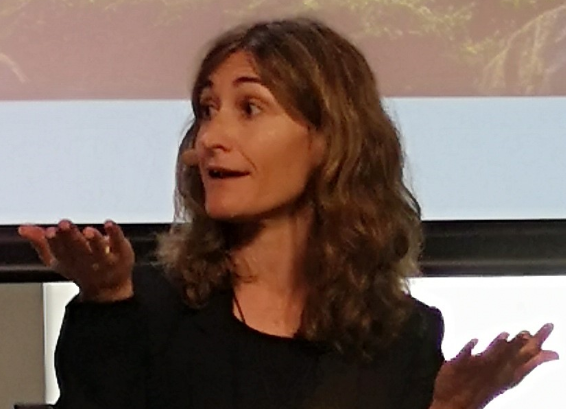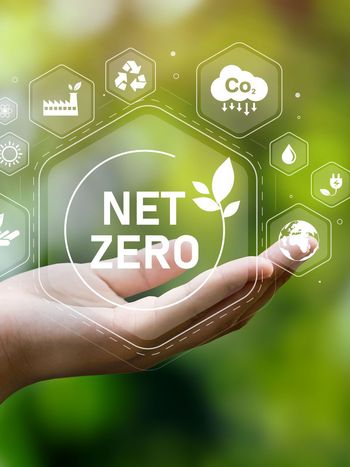Development of the electric infrastructure for energy transition: environmental challenges
Climate change is a global challenge and tackling it is a matter of high priority on the international agenda. The Paris Agreement, reached at the 21st Conference of the Parties (COP21) in 2015, marked a relevant milestone and, since then, the international community has been working on the development of the mechanisms for its implementation. The main element of the Agreement is the commitment of the signatory parties to keep the rise of global average temperatures below 2°C with respect to pre-industrial levels, striving to limit it to 1.5°C. In 2018, the Intergovernmental Panel on Climate Change (IPCC) published a technical report confirming the urgent need to increase climate change targets to more ambitious levels and work to keep the temperature rise below 1.5°C. This urgency has been recognised by the international community and increasing the ambition of climate action was one of the central aspects of the last COP26 held in Glasgow in 2021. In this respect, there is a broad consensus that the achievement of this objective requires the progressive reduction of emissions to reach climate neutrality by 2050.

By Mercedes Vázquez Miranda, SC C3 Chair
In this context, the transition towards an energy model that allows affordable and clean energy for all (SGD [1] 7) is identified as the main vector for achieving the decarbonisation goals (SGD 13). Specifically, the electricity sector plays a key role and is essential to achieving the transformation of the energy sector towards a net-zero model, through the electrification of the economy and the cleaning up of the electricity mix. In fact, in its last World Energy Outlook report (WEO 2021), the International Energy Agency (IEA) states that accelerating the decarbonisation of the electricity mix is the most important step to be able to achieve carbon neutrality in 2050 and, in particular, states that it would be necessary to increase of the share of renewable energy in electricity generation from 28% in 2020 to 60% in 2030.
Accordingly, in addition to other measures, a massive deployment of low-emission generation is required, which is expected to be mainly solar PV and wind. Such deployment will entail the need to build new generation infrastructures, but it will also be necessary to develop a robust and better interconnected grid and to implement energy storage systems, which both are required to integrate large amounts of renewable energy without jeopardizing security of supply.
However, while the development of new infrastructures is essential to achieve climate objectives, it may involve certain environmental and social impacts. Therefore, it should be carried out on the basis that these impacts must be minimal, and in no way compromise the achievement of other relevant sustainability goals.
Some (but not all) of the most relevant aspects are highlighted below.
Protection of the natural environment and biodiversity conservation
Biodiversity is essential for human health and a core factor for sustainability. Important issues such as nutrition, access to clean water, reduction of the incidence and severity of pandemics and resilience to natural disasters depend on its conservation.
The development of power infrastructures can involve impacts in the natural environment, for example tree felling and affection to protected vegetation or birdlife, among others.
The application of “mitigation hierarchy criteria” in the design and construction of infrastructure is crucial to reduce the impact on the natural environment. Avoidance of areas rich in biodiversity must be a priority criterion to be considered when choosing the locations for the siting of facilities. When unavoidable, preventive, and corrective measures have to be implemented to minimise potential impacts, including restoration of affected areas. Lastly, additional measures should be executed to offset the impacts that could not be avoided or, in the most ambitious case, even to have a positive impact on biodiversity.
Application of circularity and emission reduction criteria
The consideration of sustainability criteria in the design of new infrastructures (eco-design) makes it possible to reduce the use of raw materials and energy, as well as to minimise the generation of waste during all stages of their life cycle, which in turn implies a smaller carbon footprint. Taking these aspects into account is essential, given the large amount of new infrastructures to be developed in the coming years.
In this sense, collaboration between the different actors in the value chain is crucial and it is necessary to promote joint work between equipment manufacturers and electricity generation, transmission, and distribution companies. The role of innovation and the search for alternative technical solutions to some of the current ones (e.g., SF6 gas) will also be a key factor in this regard.
Social acceptance
One of the main problems for the development of infrastructures is their social acceptance.
Opposition to new projects has grown exponentially in recent years, being especially relevant for those that do not imply a direct economic benefit in the territories where they are implemented, such as electricity transmission lines.
This fact, together with the delay in decision-making processes, could endanger the rapid development of the infrastructures needed to achieve the renewable integration targets set for 2030.
Thus, one of the main challenges for the electricity industry is to improve communication with stakeholders and incorporate them effectively into the infrastructure planning and design processes. It will be necessary to pay special attention to local communities, identifying their expectations and finding the best responses to them. Besides, increase cooperation with regulatory authorities will also very important to streamline permitting processes.
Climate Change Adaptation
Finally, it shouldn’t be forgotten that climate change is inevitably leading to changes in climatic parameters, such as higher temperatures, modification of precipitation and wind patterns, and an increase in the frequency and intensity of extreme events, which will become more pronounced over the course of the century. These changes may affect both the physical integrity of the installations and their operation (e.g., reduction of efficiency of power generation or transmission lines capacity).
Given that the infrastructures to be developed in the coming decades will have to be operational for a long period of time, it is important to consider these changes in their design, assessing different possible climate scenarios, to ensure a resilient electricity system in the future.
Some other aspects (such as pollution prevention, electromagnetic fields -EMF-, landscape...) could also have been mentioned, but that those described above can be considered sufficient to illustrate the enormous challenge we are facing. Achieving the development of the necessary infrastructures with enough agility to accelerate the energy transition is not only a defy at a technical and operational level. The environmental and social implications, many of them associated with the implementation and development of new facilities in the territory, are also very relevant and must be addressed from the early stages of their planning and design, considering their entire life cycle.
Collaboration and dialogue between the agents involved will be essential to successfully achieve the objective.
The work of the CIGRE Study Committee SC3 is principally focused on addressing issues related to environmental and social impacts across the power industry. Our aim is to contribute to ensuring that infrastructures and their operation have the minimum impact on the environment and society, and to promote and reinforce their positive contribution. Some examples of SC3 active WG covering these subjects are WG C3.16 Interactions between electrical infrastructure and wildlife; WG C3.09 A Corridor management; WG C3.22 Vegetation management in substations; WG C3.23 Eco-design methods for TSOs/DSOs under environmental transition or WG C3.20 Sustainability goals in the electric power sector.

Thumbnail credit: Photo by Annie Spratt on Unsplash
- [1] Sustainable Development Goal (United Nations)

